We select plants for autumn flower beds
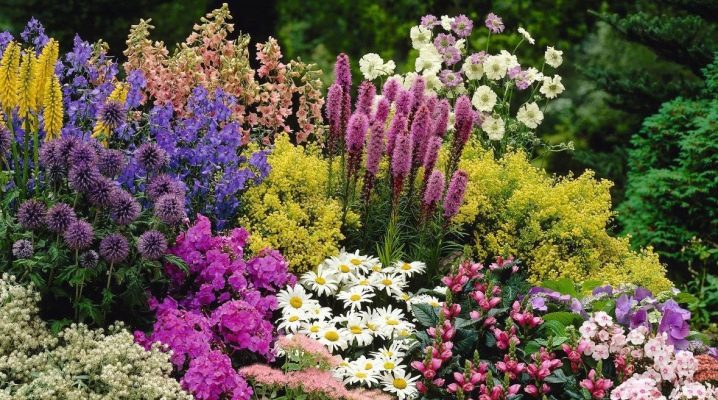
With the end of summer, a lot of elegant, lush vegetation still remains in the garden. Autumn flower beds reveal their bright buds until the very frost. In order to delight yourself with their splendor, when it is already fresh in the air, it is necessary to form September and October flower beds, carefully choosing the right set of crops for them.
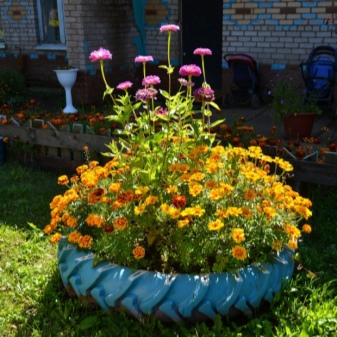
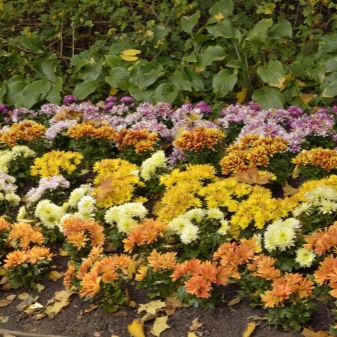
Peculiarities
The days are getting significantly shorter, the sun warms slightly, dew falls and fog spreads in the morning. But it is this period that turns out to be ideal for a whole collection of flowering plants.
They showcase a remarkable abundance of shades on the site.
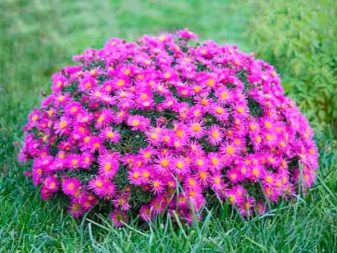
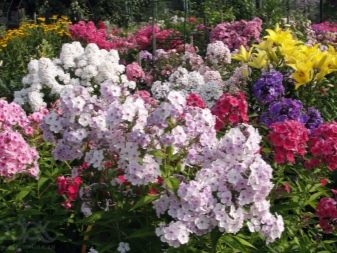
This variety of autumn colors plays a huge role not only in design, but also fights depression, according to psychologists. The rich contrasting colors of the flower garden seem to bring back summer, and with it positive emotions for a person.
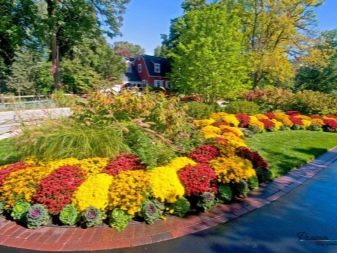
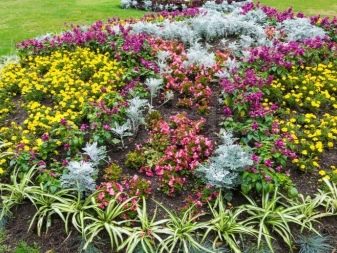
To get strong and ready-to-bloom plants, professional gardeners recommend growing autumn "soloists" not only in a flower garden, but also in pots. When summer plants begin to wither, free up space in mixborders and ridges, the strengthened autumn bushes will fill the area of the flower beds.
As a rule, autumn crops are not capricious, they calmly relate to temperature extremes and light frosts. Some of them, for example, ornamental cabbage, are ready to grow almost all of November, they are so calm to frost.
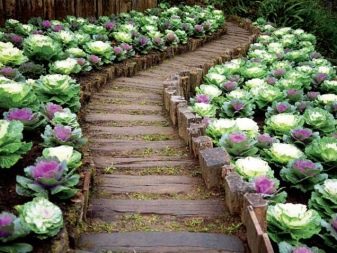
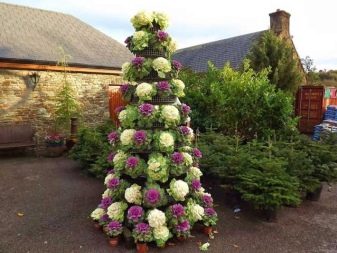
In a relatively warm September, plants such as phlox can be extended to life. If you regularly pick off wilted inflorescences, the plant throws out more and more new buds. The flower bed drawing should be taken seriously, because in the fall flowers will be the main design revival of the garden.
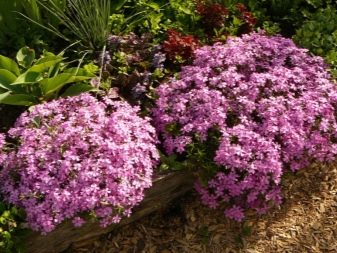
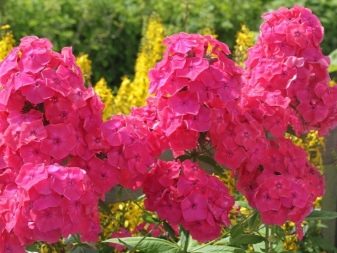
Which ones are common?
Autumn, as it turns out, is chosen for flowering by many well-known plants, but rarer names cultivated by connoisseurs of floristic exotic are no less popular with amateur gardeners.
The chrysanthemum is rightfully considered the queen of autumn. A huge number of varieties of culture determines an endless variety of flower forms and colors - burgundy, white, yellow, orange, pink, lilac. Until the very frosts, inflorescences keep on lush, spreading bushes.
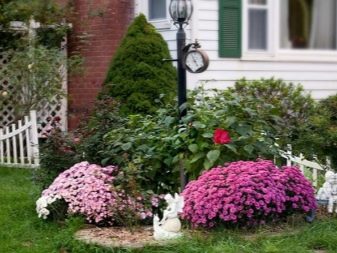
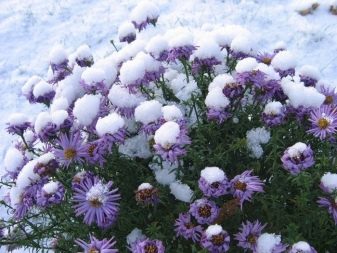
With cool days comes the turn of delicate, fragrant autumn roses. Late varieties of Orange Triumph or Irish Rose have gained popularity among lovers with subtle shades of tea, lemon, cream, soft lilac. There are also rare, almost brown, as well as purple specimens.


Landscape designers love round, flower-strewn helenium bushes. It is original in color and ranges from bright orange to brick brown. With delicate greenery, the flower creates a surprisingly original decoration of the flower bed.
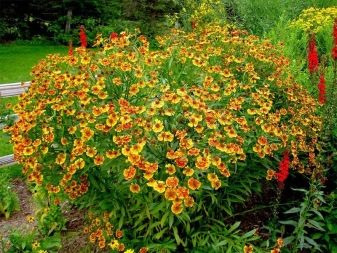
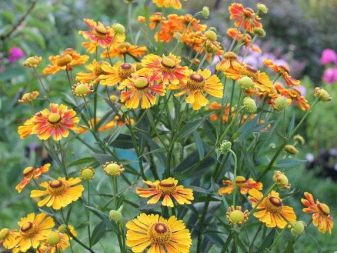
It is rare that a flower garden in September-October will do without asters, as well as their more modest relatives - Sentbrin. The first ones have classic tones - red, purple, white. The latter are striking with heavenly and violet shades, and so bright that the depth of color makes up for the relative simplicity of the flower in perception. The bush looks amazing!
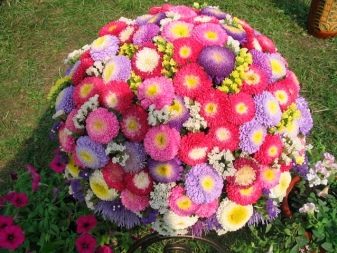
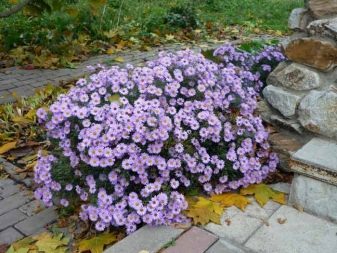
Late dahlias become elegant accents in the garden. Tall, especially spectacular in single plantings, they cause admiration for long-petaled flowers - large, scarlet, sunny, nectar shades.
Red and orange crocosmia with sword-leaves is good in autumn flower beds.These tall flowers look especially original as a border of a flower bed with perennial purple and lilac asters.
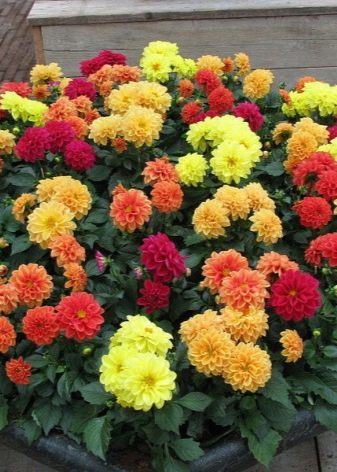
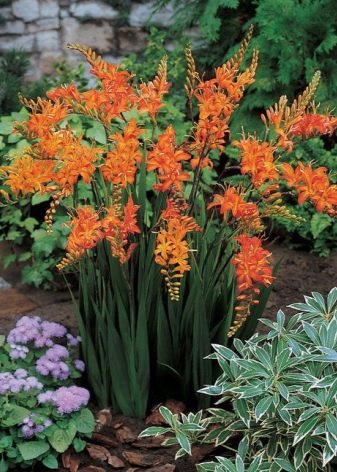
In rock gardens, hedges, goldenrod will unobtrusively take its rightful place, which will become a good companion for purple rudbeckia or yellow coreopsis. All these flowers are strong, unpretentious and create a summer mood in the autumn garden. In addition to them, colors that are no less saturated than in summer are characteristic.
Novice summer residents consider it a win-win option to plant zinnia closer to September. Almost no care is needed for it, and the plant is elegant, powerful, red-crimson, orange, white. It will not fade until the very frost, unless excessively damp weeks come, as is often the case in October.
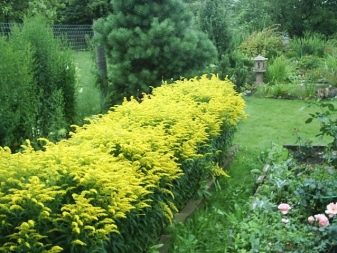
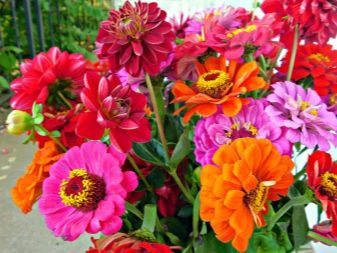
The blue, white and lilac arrows of the delphinium refresh the autumn meadow well. Having blossomed for the first time in May, in autumn the delphinium repeats the ejection of buds, delighting fans with brighter and more juicy strokes. True, this happens at southern latitudes. And in the middle lane, the plant smoothly passes for flowering in autumn, practically without slowing down the summer rate.
With graceful sparks of bright lemon color, Escholzia, the California poppy, lights up in autumn. If the weather is dry, flower after flower open their cute "funnels" again and again. New poppies appear every two to three days.
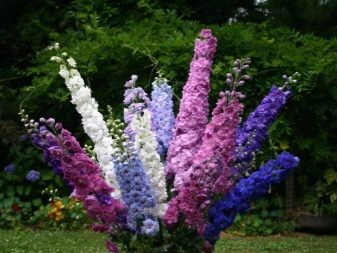
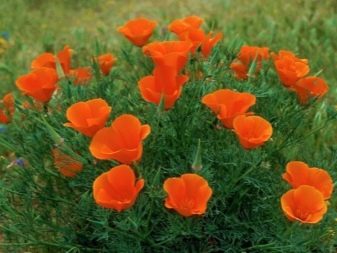
Such unpretentious centenarians as ageratum and tagetis provided themselves with a permanent "residence permit" on simple flower beds. They are good both for bordering flower beds and for the first rows of autumn mixborders.
Gardeners receive more sophisticated color combinations in the fall, who seek to diversify the popular bouquet with new species. The golden immortelle, lilac-pink Iberis, lilac colchicum fit beautifully into the September flower beds.

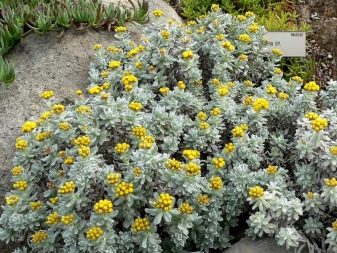
In the shade, pink-white-blue tricirtis gives its charm to summer residents. An absolute masterpiece in the autumn flower bed is the Japanese anemone.
These plants are similar to spring primroses, therefore they are beautifully discordant with September centenarians.
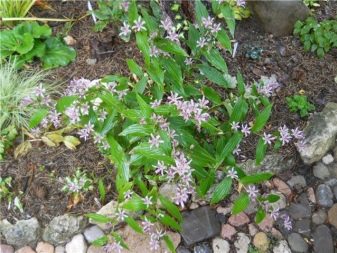
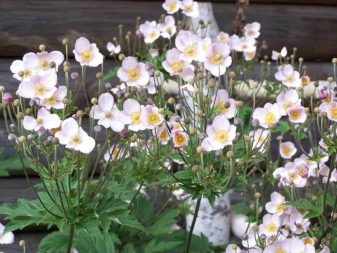
Hibiscus pleases the eye with gramophone flowers; in warm autumn, the whole bush is strewn with new buds. The palette is tropical - white, red, lilac shades.
Shrubs with bright caps and branches of flowers look very impressive on flower beds - hydrangea balls of different shades on one bush. And also raspberry heather and purple buddley panicles.
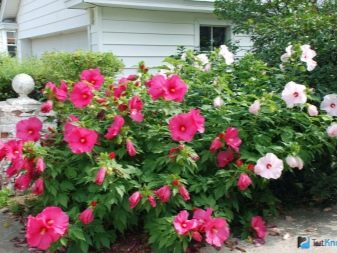
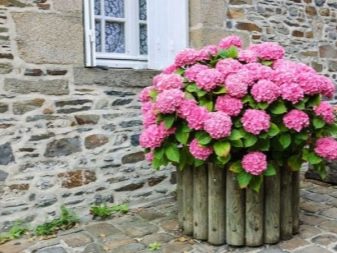
Undoubtedly, they are colorful in the autumn bouquet of amaranth. All three species - paniculate, tailed, tricolor - are distinguished by amazing colors. Burgundy panicles are combined into a bunch and even from under the snow demonstrate an unfading fountain of Amaranta colors, add a certain stylistic relaxedness to the flower bed, bring notes of Provence to a classic flower garden.

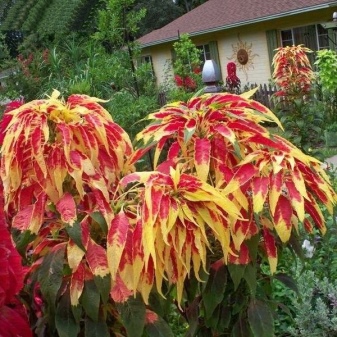
All these collections of plants go well with decorative cereals - graceful butelois, reed grass with shaggy panicles are indispensable for decorating flower beds. Lightning is compact and original with a pattern of sharp leaves. Silver-red miscanthus is only called cereal, but outwardly it is a very modern design material for flower beds, which is in no way inferior in popularity to flowers.
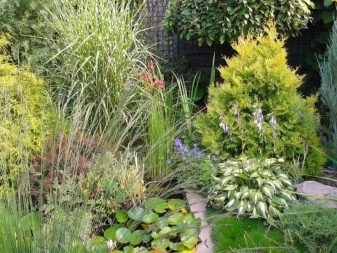
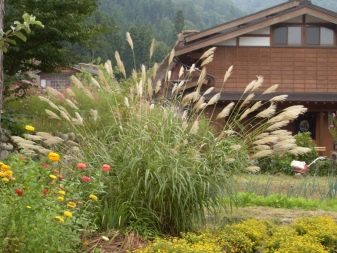
How to care?
In order for late plants to have a rich palette, agrotechnical science requires that they stop watering. An exception is made only for very young, recently transplanted bushes. Large flowering specimens love feeding with superphosphate and potassium sulfate, the addition of peat.
The features of caring for autumn beauties are different. For example, phloxes are very demanding on the ground, it must be fertilized, well-loosened and moistened. If partial shade is established on a phlox flower bed, this is the normal mode for these flowers.
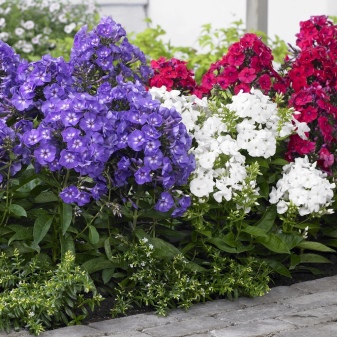
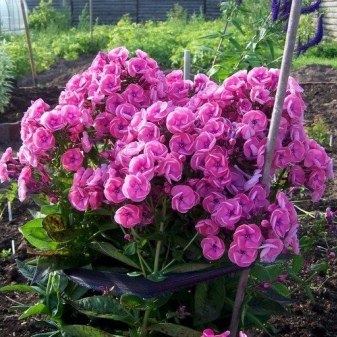
The preferences of the chrysanthemum are as follows: light soil on which the hoe has walked well. Top dressing with organic fertilizers will only play on the intensity of flowering. The soil under the bush must be constantly watered.But this plant does not tolerate stagnant moisture. So the issue of drainage will be very relevant. Since chrysanthemum can bloom after frost, you need to take care of its root system, constantly mulch the soil to avoid a frosty crust.
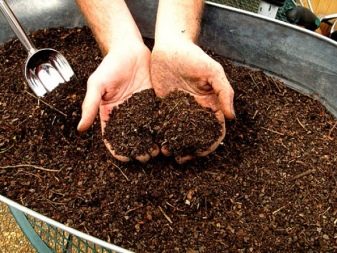
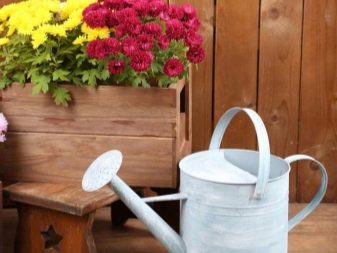
If the gelenium is provided with a well-lit area, it will continue to delight you with bouquets of new flowers in any autumn storm, including after prolonged rains and fogs. The same care technique applies to crocosmia. Not afraid of shade and rudbeckia.
However, its bushes need to be divided after about a year for the appearance of young peduncles.

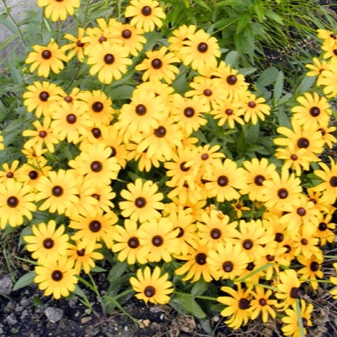
She is very capricious in growing anemone. The soil must be regularly loosened, organic fertilizers applied. A constantly lit area for an anemone is inconvenient, it needs a shade. Yarrow, on the other hand, is calm by the dry season.
But in the fall, it is recommended to water the plant to throw out brighter flowers. And be sure to pick off the withering heads in order to resume flowering.
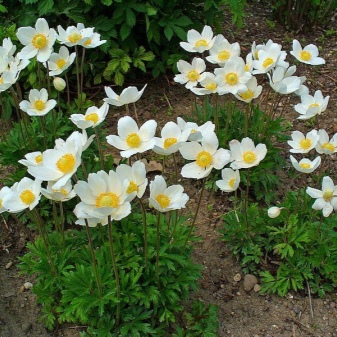

For a "Chinese lantern" or physalis, a bright place and timely weed removal are important. He needs a soil mixture that is neutral or slightly acidic. It is better to tie tall shoots to supports in the color of the stems, apply mineral fertilizers, and original orange-colored "toys" on the bush will add extraordinary freshness to the site.
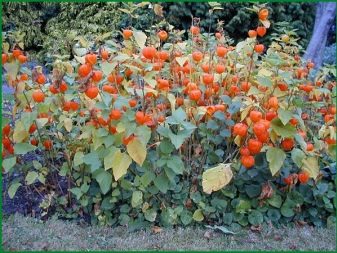
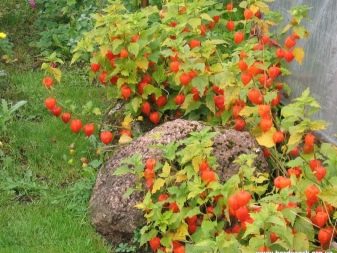
The sedum should spend the first winter indoors, in a pot or in a greenhouse. The matured plant with spectacular purple flowers is planted by gardeners in the fall in a flower bed. Sedum certainly needs a sunny place. But colchicum is ready to bloom in the shade, but in no case in drafts. Absolutely not demanding on the weather and the favorite of gardeners - zinnia. It will bloom even in the cold, unless it needs to be slightly watered.
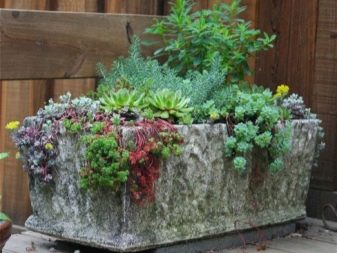
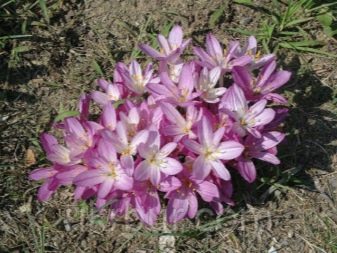
The most frost-resistant specimen is ornamental cabbage. If you want hardy cabbage to delight you with elegant shades even at -10, cover the root system with sawdust or old leaves.
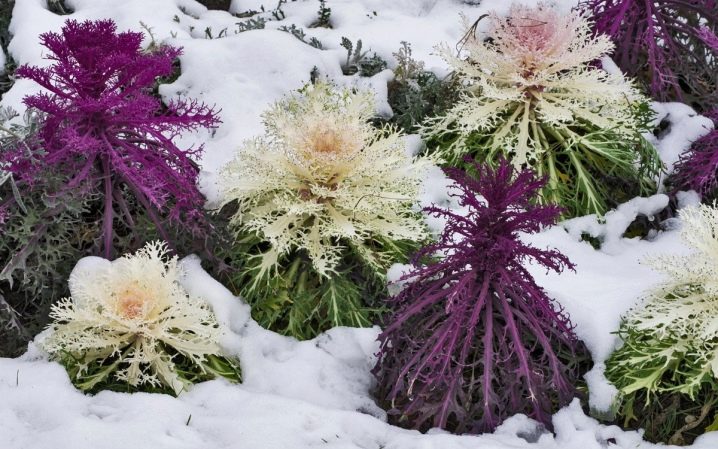
The list of autumn colors that are popular with the owners of suburban acres and city flower beds is endless. In addition to those already mentioned in this article, begonia, fuchsia, oleander, verbena, sage, nasturtium, astilbe, hosta, some daylilies, and other beautiful plants bloom in September-October.
Caring for them includes the following work:
- Large, overgrown bushes need to be planted and replanted, then there will be many flowers in the garden.
- In the course of transplanting, renew the roots - peel, remove the diseased parts of the bulbous so that the bulb does not shrink and does not give weak buds.
- Dry rhizomes and bulbs of peonies, dahlias, gladioli and cover in a cool cellar.
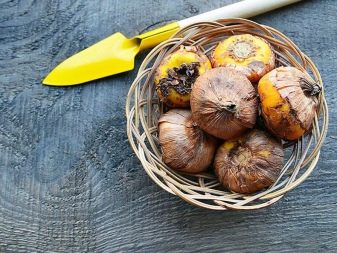
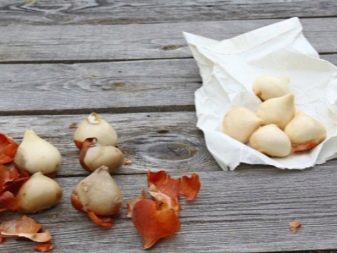
- For flowers that do not need a transplant, apply potassium-phosphorus fertilizers, dig up the soil under the bushes.
- Focus on roses: they not only need fertilizer, but also neat pruning and shelter for the winter.
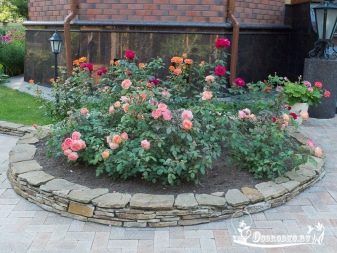

In the flower garden, before wintering, you need to do the following work:
- In early September, plant bulbous plants - daffodils, tulips. If you are planting them in late September, cover with straw.
- Collect seeds from annual flowers to prepare planting material for the next season.

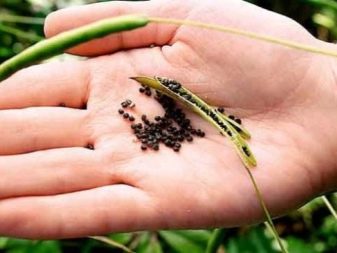
- At a temperature of 0 - +5, remember clematis or other climbing perennials. Cover them with your own shoots by rolling them up.
- Cut the greenery off the peonies and sprinkle ash and sand around the bushes. You can cover it already in frosty conditions.
- Summer flowers are also properly sown in the fall. But calculate everything so that the seeds swell, but do not hatch.
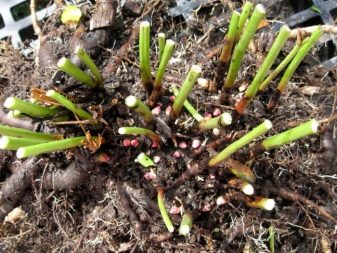
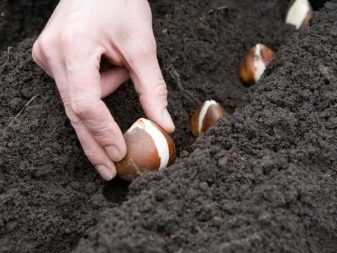
How to arrange it correctly?
The "soloists" of the autumn flower beds are distinguished by their unrestrained riot of colors. These are not only blue, crimson, white, yellow bright spots, but also variegated, speckled, striped. The element sometimes turns out to be close to a certain stage, bordering on bad taste.
In addition, the stems, on which elegant fragrant heads rise, tend to different lengths, often creating continuous heaps.Therefore, we must focus on the correct coloristic design of the September and October flower garden.


Experienced gardeners skillfully add several other species to some plants, depending on which ones bloom until autumn, which ones in autumn and how harmonious they have a tone. Here the summer flowerbed smoothly "flows" into the pre-winter one.
The taller bushes should be positioned to shade rather than obscure small plants. Thick and spreading bushes should not interfere with the look of individual plantings.
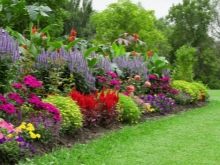

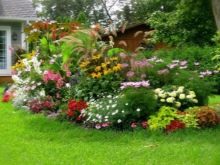
If you form a flower bed of chrysanthemums and asters, then a competent solution would be to combine classic tall chrysanthemums as a background and New Belgian or New England asters as a cutting edge. The named chrysanthemum variety produces a lot of greenery and beautiful, densely packed flowers. And the listed varieties of asters form large bouquets with a small bush height.
It remains to "settle" the problem of color harmony. Do not mix purple or raspberry asters with yellow chrysanthemums. Take pink tall flowers and white, scarlet, burgundy - low ones. This will be a manifestation of the good taste of the flower bed maker. In a flower garden, it is important to take into account the traditional compatibility of coloristic fragments, including cereals, amaranths.
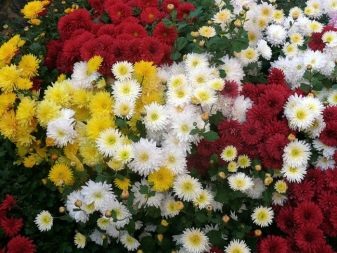
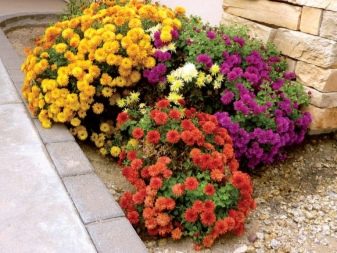
A horizontal flower bed of such complexity, for example, will look vivid and unassuming. About the perimeter of the orange goldenrod, the second tier is lower - rich pink astilbe.
In the center are white-red and white-raspberry verbena.
Proof of the craftsmanship of the professionals, of course, is the continuous flowering flower bed. Consider an option with an emphasis on autumn. Prior to that, the composition will feature themes of spring (crocuses, daisies, primroses, viola), summer (hazel grouses, levkoi, early roses, liatrices).
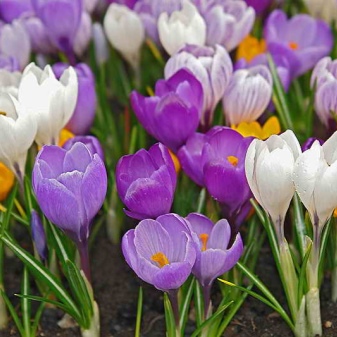
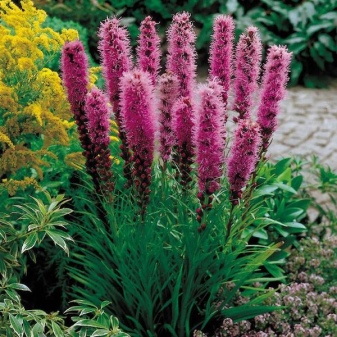
And now autumn. A scattering of flowers will turn out to be bright, but not flashy, but harmonious. From perennials, the collection will include white carnations, burgundy echinacea, sunny rudbeckia, red-pink begonias, tea-colored remontant roses. Coreopsis (orange-yellow) and craspedin (lemon-brown) will help to dilute them with butterfly flowers.
The flower bed will not fall into confusion of tones, it will do without blue and blue, but it will be perceived as festive and solemn. Moreover, the fragrance will last until frost.
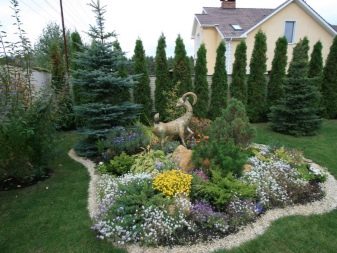
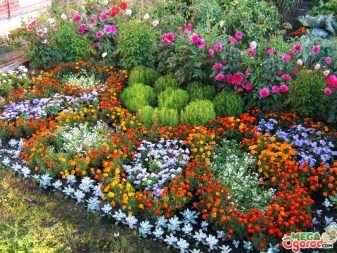
Here is a sea of dahlias. In autumn, all their varieties bloom - peony, nymphaean, spherical, collar, needle. Dahlias are good on their own, without being woven into the flower bed collection, so we can single out the third conditional theme - "proud posture". For a spectacular flower garden, it is better to select yellow and dark red specimens of needle dahlias, in combination with raspberry and white nymph and anemone.
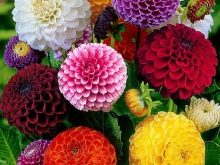

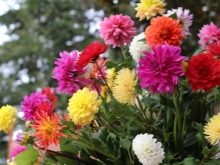
Well, the autumn “prima donna”, of course, is personified by the chrysanthemum. Let's dwell on bronze and burgundy tones. Let's take a large-flowered one, let it be the main accent of our "defiant" flower bed. It is appropriate to add a blazing rudbeckia of the “golden ball” variety to the chrysanthemum. And along the edge we will muffle this "fire" with a pinkish stonecrop.
A cute continuation of this "off-season" parade will be a short perennial aster. She will border our set with heavenly azure.
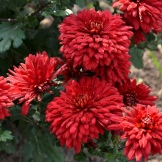

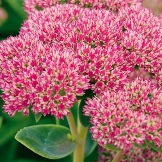
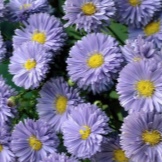
For a more specific story about how to form a more characteristic flower bed of all-season flowering, we will outline the diagram in as much detail as possible:
- Centre. We plant large perennials or annuals in the “head” place of the flower bed, and for originals, we generally advise you to try placing a tree - for example, a Japanese apple tree with falling branches and a waterfall of flowers and leaves. The height of the apple tree is twenty meters.
If you still chose flowers, then it is better to give preference to the bushes of late roses.
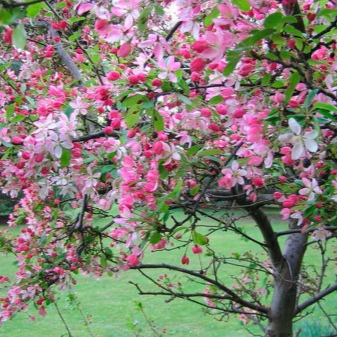

- The middle. Having retreated 50-60 centimeters from the trunk or rose bush, we root white park roses. Their height is 60-70 cm, the flowers are not huge, 5-3 cm in diameter.
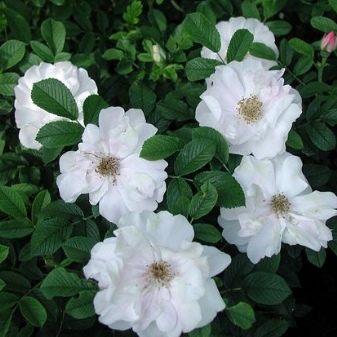
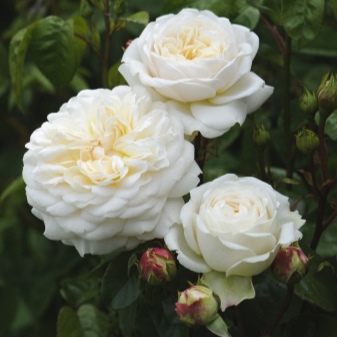
- Next row. Asian orange lilies, between them spots of Armenian blue muscari.When muscari loses flowers, its leaves remain healthy and bright green.
They go under the snow, preserving the richness of the spring tone.
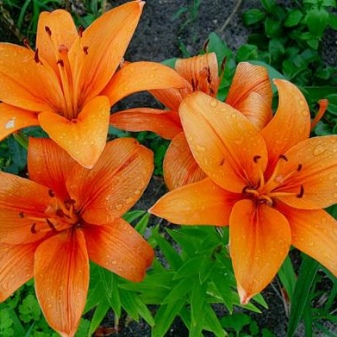

- The final row. Primroses, creeping tenacious burgundy hue. This early pattern looks like a light cloud with a rainbow overflow.
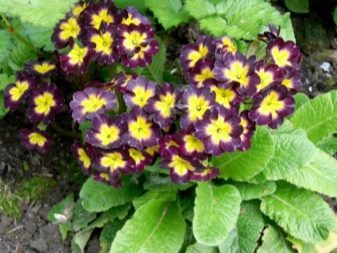
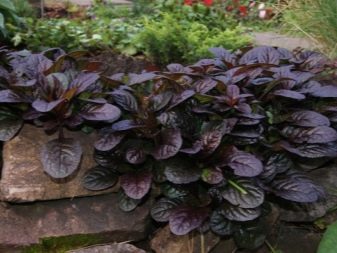
So that in the fall, instead of the spring "singers", later flowers will take over the baton, we complement the composition in the last row with the Pyrenean white aster. She will drive out her inimitable "daisies" in September, which will stop blooming only in November. For brightness, it is better to plant also a purple chamomile aster.

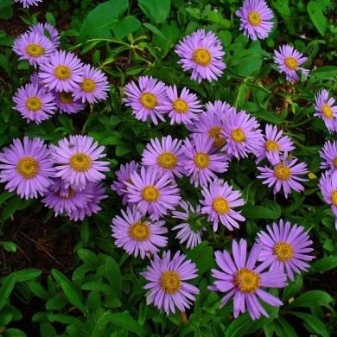
Beautiful examples
Autumn flower beds provide incredible scope for the imagination of landscape designers. Bright September bouquets in austere stones look romantic. For example, multi-colored phlox, planted in tiers in rockeries at the entrance to the house, give rise to a feeling of celebration for guests who have just walked through an already faded garden.
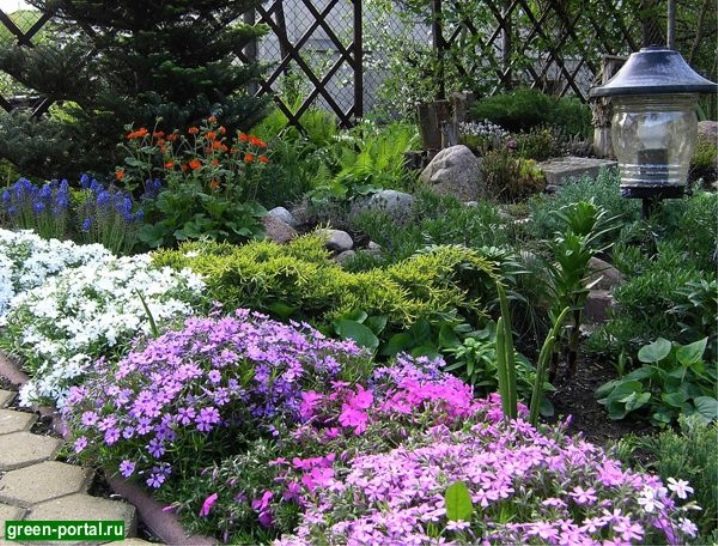
As if a goldenrod hangs weeping bunches by a pond. By the way, all autumn compositions against the background of artificial reservoirs are picturesque and elegant at the same time.
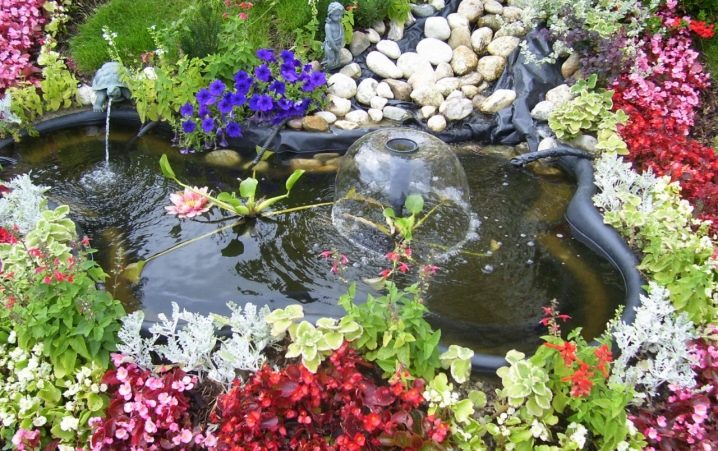
The most inventive designers plant fall flowers in intricate patterns that are spread out in lush carpets along the entire site. Roses are the backdrop for the stage. And in the foreground there is an ornament of round compositions of stonecrop, square inclusions of cineraria, "pigtails" of verbena and balsamines.
Tall candles of white, blue, purple delphinium in the background “shoot” bright rockets. As "sparks", if you look from a certain position, there are yellow marigolds and small white crocus leaves "carelessly" scattered in the planting.

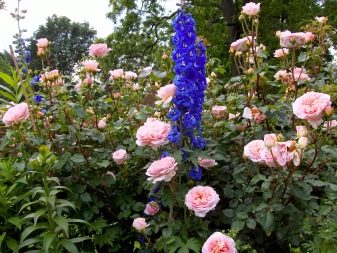
You will be surprised to find a joyful cascade of yellow, pink and burgundy rudbeckia - the composition plays at different heights of the same plant.
The ceremonial perception of the porch and windows of the house is provided by the royal begonia in pots. Terry varieties of white, red and yellow should be planted nearby. From a distance it seems as if the flowers have just been poured with fresh paint, they are so saturated and "explosive" tones.


Without exception, all summer residents will like the planting of low-grade asters and their highlighting with special lanterns. Asters are calm about artificial lighting of flower bed fragments, which cannot be said about chrysanthemums.
Those do not tolerate light other than the sun.

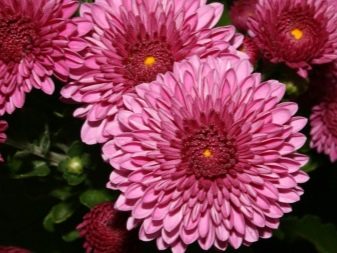
Ampelous plantings, that is, hinged flower beds, look intricate at the autumn dacha. Autumn alissum, lavater, petunia feel comfortable in all kinds of structures attached to supports, lattices, gazebos.
In baskets and flowerpots, effectively put on the autumn lawn a bright snapdragon, montbrecia. Lobelia “flowing” from a clay pot and “streaming” on the ground is also a bold find for the fading landscape of September.
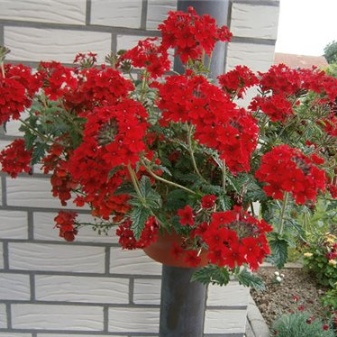
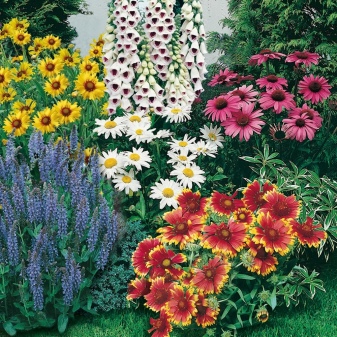
Autumn gladioli create a very optimistic pattern. Designers suggest planting them in groups or singly along the alley, choosing the brightest colors - white with burgundy, pink and scarlet. In a "pair" with gladioli, a foxglove can "march". The sight of these handsome men is unrealistically fresh in the picture of the pre-winter. Tall flowers in autumn compensate for the lack of powerful, vibrant plants.
Butterfly flower beds and garland flower beds are beautifully assembled from undersized and unpretentious ageratum, salvia, escholzia. Lovers of a stone autumn garden will create a mood for themselves by scattering geraniums, terry calendula, and astilbe among the rounded cobblestones.
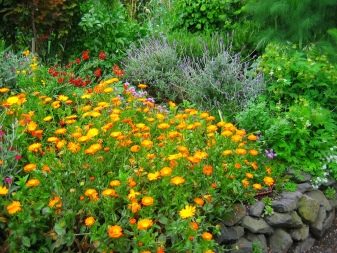
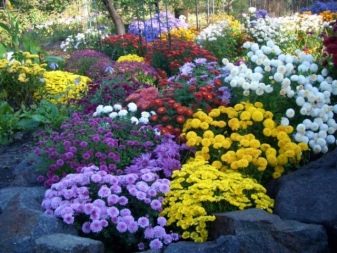
An arch or a bridge, hidden in curly autumn roses, looks great. Connoisseurs of the exotic even build island flower beds in the middle of their summer cottages. Coreopsis, akalifa, and cloves are planted on them in special containers. For disembarkation, boxes are used, immersed in the soil of an artificial island in a country pond.


Thanks to design findings, the garden is colored with the most charming colors before diving into winter. If you are attracted by this beauty, do not get tired of working and creating in the garden until the frost. All efforts will pay off many times over.
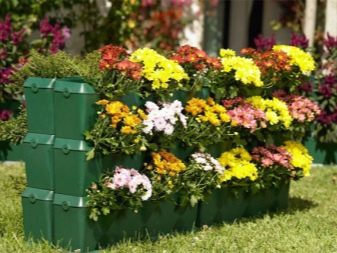
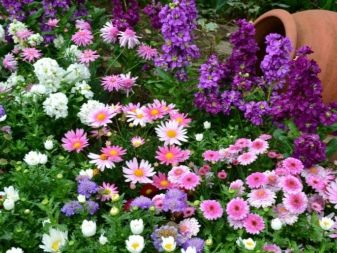
For information on the main mistakes made when designing flower beds, see the next video.







































































































The comment was sent successfully.